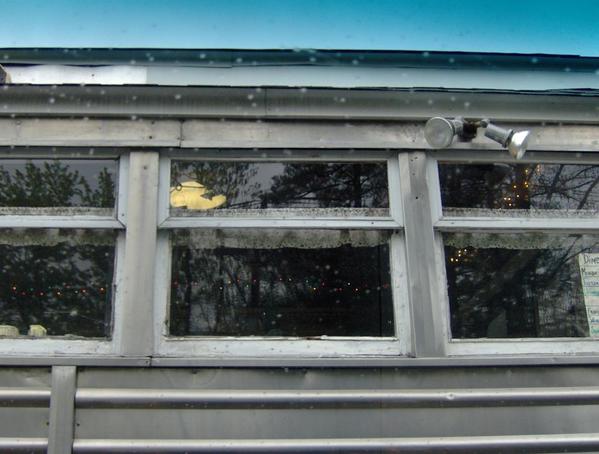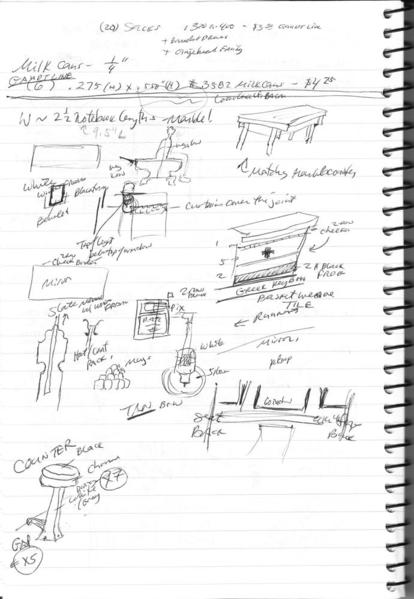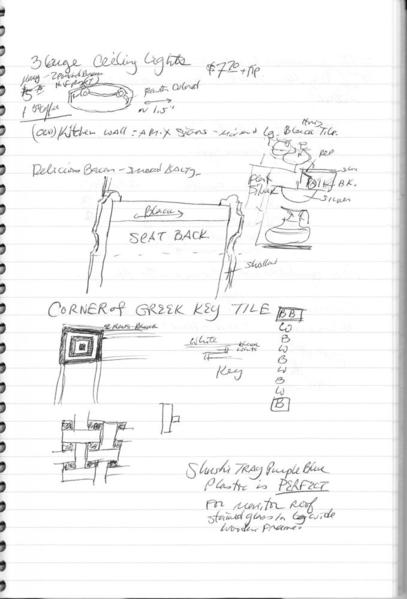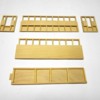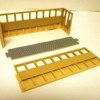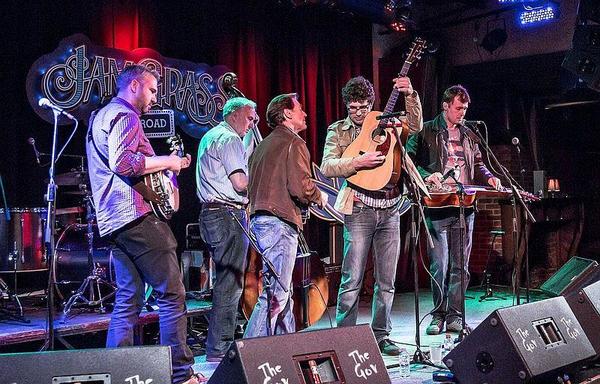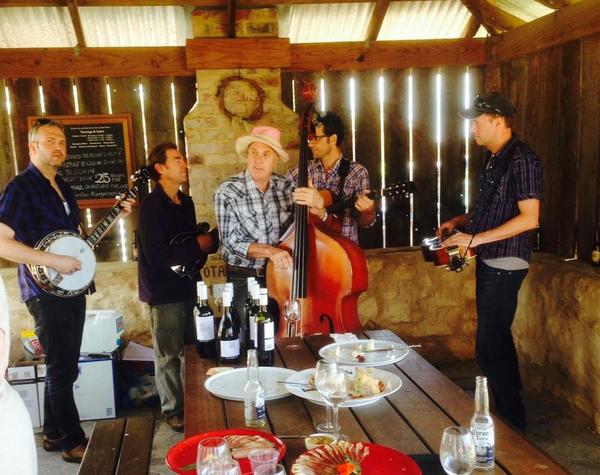Today's Diner Project: Mustard and Catsup squeeze bottles; Beer bottles and a cup of Chili from Toothpicks
Disclaimer: I'm really not looking for food items to use in my diner model. Honest. They just find me!
We don't have just any old toothpicks where I work. We have "Tea Tree Therapy MINT Toothpicks":

These birchwood toothpicks are "infused with [Australian -- take note Max!] TEA TREE OIL, mint, cinnamon" and more to help "freshen breath and kill bacteria". Good to know. But what I found more interesting was their suggestive carved shapes! I could envision scale pepper mills, cups, goblets, and more depending on where and how one cut the carved ends. You could even split them down the center axis for even more possibilities. And, as an added bonus, the top of each toothpick is raised and has a sort of reddish "grain" suggestive of food -- Chef's 3-alarm chili comes immediately to mind. Here were some initial experiments dividing the tops up into three different sections:


These were the most obvious divisions to me. It's a hard to see, but in the photo above at about 9:00 is a bowl of chili (on its side), at about 1:00 or 2:00 is a bottle with the neck facing upward, and about 00:25 is a footed bowl. [Some better photos below ... ] These items were created by cutting from the top downward, leaving a pointed stick for more minty fresh modeling projects.
The pause that refreshes: Never one to miss a culinary opportunity, Chef Chuck Wagon suggests pairing these minty fresh toothpicks with a tall cool glass of Pappy's Sassafras Tea -- it's "Refreshing as Spring ... All Year Long". Who can argue with that?:

This morning I decided to use these toothpicks to create four sets of mustard and catsup squeeze bottles for the tables and counter that I will be adding to my diner model. Here, I've painted four catsup and mustard sticks, plus two glossy green sticks from which I will make bottles.

But first, a digression: Previously, I purchased a set of miniature "Fiesta ware" plates. Here's Chef modeling them (he thought it was "Fiesta wear" and was pleasantly surprised to find out they were china):

Fiesta ware comes in different mix and match colors. Had I purchased more of these plastic dishes, I would have (spray?) painted each sprue a single but different color, clipped the plates out of the sprues, and then mixed them up to create new sets. It seemed more efficient to paint them all one color than try to hand paint different dishes different colors on a single sprue. But, these lovely dishes are expensive, and being cheap, I decided to experiment with other ways of making dishes such as using the paper punches on plastic sheets that I described earlier.
However, I had the Fiesta ware painting approach in the back of my mind when I started to create my mustard and catsup squeeze bottles. By painting the ends of the sticks a single color, when I cut out the bottles, I'd get bonus "dishes" -- one a cup of chili, the other a footed bowl, as by products. If I use lots of colors, the result is instant mix and match Fiesta ware!
Here's the first cut, which creates four cups of chili:

The cups of chili are sitting on a paper prototype of a dish that I created using a standard size paper punch. The blue dot to the right is a "Blue Plate Special" that I created from a Tums lid. The punch is 3/8ths of an inch or something and could be a bit larger, but the Tums lid makes for a really nice shiny plate. (By the way, those tweezers are useless. Items as small as the cups of chili need a longer pair with a lot of spring, which I switched to, but didn't photograph.)

As you can see in the photograph above, there was some loss of paint in the remaining sections. From these I will create the squeeze bottle and then a footed bowl. I touched up the paint on the bottle "necks", and did a little light filing before continuing with the cutting. Garnet paper would have been best for touch ups but I didn't have any. Cutting was easy with a #1 X-Acto knife and facilitated by rolling the toothpick while applying pressure. A few chili cups were lopsided, but in general, this technique worked well.

Above are what will be the mustard squeeze bottles sitting on top of what will become footed bowls. The cups of chili have already been removed and are on the blue lid. The tops of the yellow "bottles" didn't need as much touch-up as the red ones did. This photograph also shows the plastic Tums lid. I cut out bits of the rim so that the paper punch could be slid onto the lid to create some sample Blue Plate Special dishes. If I had used a regular punch, cutting the rim wouldn't be necessary. However, the paper punches may provide greater visibility for lining up smaller punches to suggest plate depth as I described in a previous post.
Here is my head steward modeling two sets of catsup and mustard squeeze bottles. He's getting ready to place them on a table in the diner, except that I haven't built those yet! 

As you can see, some bottle necks are a little wider than others. I'm not sure whether that was due to differences in the (minty fresh) toothpicks or the klutz cutting them. I'm inclined to suspect the latter.
By the way, to hold the bottles on the tray, as well as to keep the figure upright, I used double-sided Scotch tape. For the tape on the tray, I've left a little nubbin on the left side so that I can remove the tape easily after photographing. Ignore it. So far, the tape doesn't seem to remove paint on the figures. It has just enough hold to position items or a figure for, say a photo shoot, and then it looses some of its hold. I'll be cutting out little plastic square stands and using them for posing figures in the future. The double-sided tape allows me to add temporary plastic stands to figures, then disassemble them so that the figures can be stored flat in their packaging.
Here's what looks like a Heineken bottle and a cup of Chef's 3-alarm chili, along with some Fiesta ware in various stages that are waiting to be released from their toothpick matrices:


Here are all the items that I can fashion out of a single minty fresh toothpick:

Rear of tray: Heineken bottle, catsup squeeze bottle, mustard squeeze bottle
Front of tray: Footed bowl/egg cup, cup of chili.
Foreground: Before and after minty fresh toothpicks. And, when I say "minty fresh", I mean it. These things are strong -- if not 'refreshing as spring'. Oh, yeah, and you can actually use them as toothpicks, too. Another view; note the textured reddish tops:

A note about the "footed bowl/egg cup". This is the last item fashioned out of the toothpick's carving. You can either paint below the last carved shape or not. At first I thought I'd cut the toothpick at the base of the last "shape" (red line).

This would create a bowl with a foot on it similar to an Asian rice bowl. I intentionally painted beyond this section so that I would have less retouching to do after painting. But then I realized that if I cut into the toothpick section below, that I could create a real foot -- like a wine glass or goblet has (blue line, approximate). So, that's what I did here. It's more stable and looks better. Because I cut further than I painted, it also gives a two-tone effect. A #5 X-Acto did the trick. My X-Acto medium saw blade worked, too, but caused some splintering.
Any suggestions of projects for the leftovers? They still make great 1:1 toothpicks  . And they are so minty fresh!
. And they are so minty fresh!
Tomlinson Run Railroad



































































 \
\







